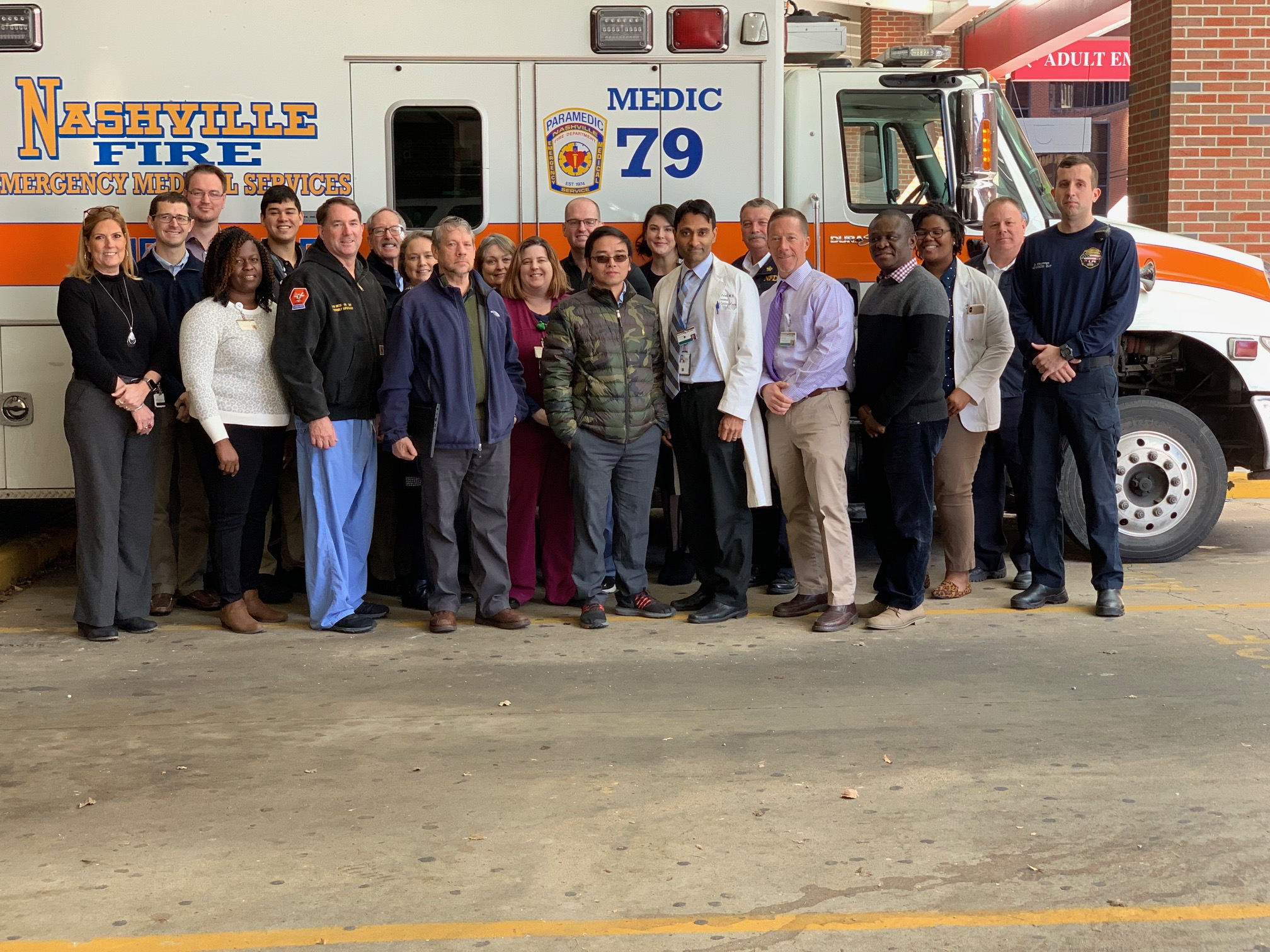Between 8 and 15% of people with traumatic injuries die because they don’t get adequate help breathing. The Prehospital Airway Control Trial (PACT), an $8.8 million four-year study, will test different strategies to increase survival when helping patients breathe at the scene of a trauma.
EMS personnel currently use one of two common strategies to secure a person’s airway — one is with a tube in the windpipe, called an endotracheal (ET) tube, and the other is with a device that sits over the windpipe, called a supraglottic airway (SGA).
Both strategies have advantages and disadvantages, according to Sean Collins, MD, professor of Emergency Medicine at VUMC.
“There is great debate as to which to use,” Collins said. “We’re hoping the PACT study will provide emergency responders guidelines for which strategy to try first or what to use in different conditions to improve the odds that their patient will live.”
“Time matters in traumas, and if you aren’t using the best possible strategy first, you are losing crucial minutes to save someone’s life,” he added.
The study will enroll more than 2,000 people age 15 and older who are taken to an adult trauma center.
Endotracheal (ET) intubation requires the clinician to go through a series of difficult steps. ET intubation involves moving the patient’s tongue aside, seeing the vocal cords, and threading a tube past the cords into the patient’s windpipe.
The supraglottic device (SGA) also consists of a flexible tube inserted through the mouth, but instead of having to be threaded through the vocal cords, it sits at the back of the throat, above the windpipe. The SGA is believed to be easier to place in the field because it doesn’t require seeing the vocal cords, meaning the airway can be secured faster and with less interruption of resuscitation efforts.
Studies have shown that a provider needs to put in 10 or more ET tubes to become good at it, and they need to do five to 12 per year to stay good at it. However, most providers put in fewer than two per year.
In contrast, SGAs have been proven to need less practice, and they are much quicker to put in. They are also easier to use and don’t require the same equipment needed to put in an ET tube.
When placed correctly, the endotracheal tube may be associated with less risk of the patient breathing fluid into the lungs and other device-related complications.
“It can take an emergency responder longer to successfully place an endotracheal tube in the field, so there is a debate as to whether EMS personnel should start by trying endotracheal intubation or if they should go straight to using a supraglottic device,” said Nashville Fire Medical Director Corey Slovis, MD, also a professor of Emergency Medicine and Medicine at VUMC.
Participating EMS services will start by using their normal procedures to secure an airway and the trial will collect data on patient outcomes. Then, the services will switch to trying the supraglottic airway first. If it fails, they can then decide whether to try the supraglottic again or switch to endotracheal intubation.
“Our hope is that, after four years, we’ll be able to definitively say whether it is better for patients if emergency responders immediately use the supraglottic device to secure the airway or if it is worth it to attempt to place an endotracheal tube,” said Neal Richmond, MD, associate professor of Emergency Medicine at VUMC.
Because traumatically injured patients cannot consent to the trial, the study has gone through a community consultation process and patients will be automatically enrolled if they fit the study criteria. Patients and family members will be notified after enrollment and can opt out of continued participation at that point. People can visit www.litesnetwork.org/PACT for more information.
The University of Pittsburgh School of Medicine is the clinical coordinating center for PACT, which is part of the DOD’s Linking Investigations in Trauma and Emergency Services (LITES) research network of U.S. trauma systems and centers. VUMC has been part of this national team since its inception under Trauma Surgeon Mayur Patel, MD.
In addition to VUMC, centers participating in PACT are East Carolina University, North Carolina; Emory University, Georgia; Cook County Trauma Services, Illinois; University of Louisville, Kentucky; Oregon Health and Science University; Tulane University, Louisiana; and Washington University, Missouri.
This research is funded by DOD contract W81XWH18F0426.
Original post https://alertarticles.info


